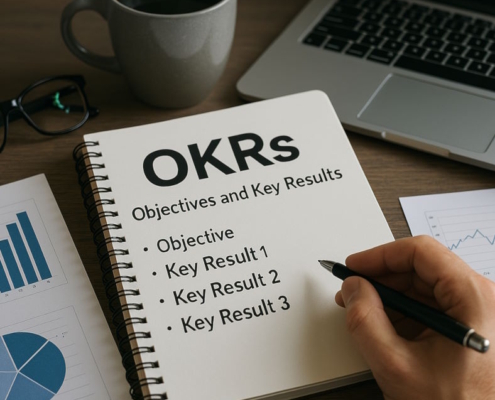Introduction
California’s usury laws are often misunderstood, particularly in the realm of real estate-backed investments. A recent hypothetical scenario involving a $10 million loan at 14% interest for a commercial development in Merced, California, provides a vivid lens through which to examine the legality of such interest rates — and the broader liabilities that may ensue when agency relationships and fiduciary duties break down.
I. Background: The Hypothetical Loan Transaction
This case study presents a complex set of legal relationships and liabilities. Dan, acting as a purported intermediary, introduced Paul to Sunrise Equity LLC and structured a high-value loan secured by real estate. He also designated Pacific Fund Control Inc. (PFC) to handle disbursements. Paul relied on Dan, failed to independently review loan documentation, and ultimately bore the consequences of faulty disbursements and mismanagement. The trial court’s finding that Dan and PFC acted as Paul’s agents triggered vicarious liability, and the subsequent $10.1 million settlement underscores the high stakes involved when informal fiduciary arrangements are left unchecked.
II. The Usury Law & Exemption
A. Legal Cap on Interest Rates
Under the California Constitution, Article XV, § 1, the legal limit on interest is generally 10% per annum for non-exempt loans based on written contracts. Civil Code § 1916.1 reiterates this cap, while § 1916-2 provides penalties for violations, including forfeiture of all interest. However, statutory and judicially recognized exemptions exist, notably for loans made for commercial purposes or arranged by licensed real estate brokers.
B. Broker Exemption: Business and Real Estate Loans
Pursuant to Business & Professions Code §§ 10131 and 10240, the broker exemption shields lenders from usury limitations if a licensed real estate broker arranges the loan. Courts interpret this exemption strictly. In Ghirardo v. Antonioli (1996) 14 Cal.4th 39, the California Supreme Court reaffirmed that licensure at the time of transaction is crucial. Compensation and active participation in negotiating loan terms are often dispositive. If Dan lacked licensure, the broker exemption would not apply—even if Paul believed otherwise. As Ezer v. Fuchsloch (1979) 99 Cal.App.3d 849 illustrates, good faith reliance on a supposed broker’s status does not satisfy the statutory requirement.
C. Commercial Purpose & Usury
Even in the absence of a licensed broker, courts have recognized that usury protections do not extend to loans made primarily for commercial ventures. The Sunrise project involved large-scale real estate development, aligning with holdings such as Tucker v. Lassen Sav. & Loan Assn. (1974) 12 Cal.3d 629, where the California Supreme Court noted that business loans are inherently distinct from consumer credit and not subject to the same usury concerns. The commercial nature of the loan, coupled with its secured status, strengthens the argument that the 14% interest may fall outside usury boundaries. In summary, this section establishes that when a loan is made for a bona fide commercial purpose, California usury laws may not apply, thus rendering higher interest rates—such as 14%—legally enforceable under appropriate circumstances.
D. Lender is Not A Licensed Lender
If the lender is not a licensed lender under the California Financing Law (CFL), Department of Financial Protection and Innovation (DFPI), or other financial regulatory schemes (e.g., a bank, credit union), and the loan is not arranged by a licensed real estate broker*, then California usury laws can apply — even to hard money loans for commercial real estate development. Below is a detailed breakdown of what this means and when such loans may be considered usurious:
D-1. Usury Laws in Absence of Licensing
Without a qualifying exemption, California law caps the maximum legal interest rate at the greater of:
Any rate above this ceiling — unless a statutory exemption applies — may be considered usurious, which can have severe consequences.
D-2. Common Exemptions That Would NOT Apply
If the lender: (1) Is not a licensed financial institution, and (2) The loan is not brokered by a licensed real estate broker, then the following typical exemptions would NOT apply:
Thus, the lender is subject to usury laws, regardless of the commercial nature of the loan.
D-3. Purpose of Loan Is Not a Standalone Exemption
Some confusion exists about whether a business or commercial purpose loan is exempt from usury. Under California law, the purpose of the loan alone does not automatically exempt it from usury laws. Instead, exemptions are based on who is making or arranging the loan, not how the money will be used.
That means even a loan to build commercial real estate could be usurious if made directly by an unlicensed private party without broker involvement.
D-4. Penalties for Usury
If a loan is found to be usurious:
-
The lender may forfeit all interest, both accrued and future.
-
The borrower may sue to recover interest already paid.
-
In some cases, usury can lead to treble damages and attorney’s fees.
-
A court may also find the entire agreement unenforceable if it is severely tainted by usury.
D-5. Exceptions That Still Might Save the Transaction
Even if the lender is unlicensed, usury law may still not apply in these situations:
a. Loan Structured as a Sale of an Interest in Property
Courts will look at the substance of a transaction. If it’s genuinely a joint venture or equity investment, and not a disguised loan, usury laws might not apply. But this must be genuine, not just in name.
b. Corporate Borrower Exception (Very Limited in CA)
While some states offer exemptions if the borrower is a corporation, California does not recognize a blanket “corporate borrower” exemption. The focus is on the lender’s status and whether a licensed broker was involved.
III. Fiduciary and Agency Implications
A. Finding of Agency
California courts adhere to broad principles when defining agency. An agent is “one who represents another in dealings with third persons,” under Civil Code § 2295. By selecting PFC and handling negotiations, Dan functioned as Paul’s agent. As in van’t Rood v. County of Santa Clara (2003) 113 Cal.App.4th 549, an agent’s authority may be implied from conduct. Here, Dan’s authority over escrow and disbursements, as well as his role in foreclosure, created sufficient indicia of agency, resulting in Paul’s vicarious liability under the doctrine of respondeat superior.
B. Breach of Fiduciary Duty
An agent owes duties of loyalty, full disclosure, and care (see Michelson v. Hamada (1994) 29 Cal.App.4th 1566). Dan’s profit-sharing arrangement and secret settlement with Sunrise constitute textbook breaches. CCP § 877.6 permits judicial determination of good faith settlements, which Dan failed to seek. This omission compounded Paul’s exposure. Dan’s breaches mirror those in City of Hope Nat. Medical Center v. Genentech, Inc. (2008) 43 Cal.4th 375, where a fiduciary failed to disclose material financial interests. Paul’s subsequent indemnity claims against Dan are likely viable.
IV. Equitable Indemnity and Implied Contractual Indemnity
A. Equitable Indemnity
Equitable indemnity applies where two tortfeasors are jointly and severally liable but bear differing degrees of fault. As established in American Motorcycle Assn. v. Superior Court (1978) 20 Cal.3d 578, California permits comparative indemnity. Dan’s control over loan logistics and foreclosure, and his fiduciary failings, suggest disproportionate fault. Thus, Paul may recover indemnity for amounts paid to resolve joint liability.
B. Implied Contractual Indemnity
Where no express indemnity agreement exists, a special relationship—like that between principal and agent—can support implied indemnity. In Jocer Enterprises, Inc. v. Price (2010) 183 Cal.App.4th 559, the court allowed implied indemnity based on quasi-contractual conduct. Dan held himself out as an expert, structured the deal, and undertook to protect Paul’s interests. His failure to notify Paul of the settlement and his disloyalty establish a strong basis for recovery under this doctrine.
V. Dan’s Defenses to Liability
1. No Duty Owed
Applicable to: Fiduciary Duty, Negligence
Argument: Dan could assert that he did not owe Paul a fiduciary duty, maintaining that he merely served as an independent deal facilitator or a non-fiduciary business contact. Under California law, fiduciary duties arise from relationships where trust and confidence are reposed by one party in another, such as in formal agency or legal representation (see Wolf v. Superior Court (2003) 107 Cal.App.4th 25, 30). If Dan was not expressly or impliedly authorized to act on Paul’s behalf, he may argue that no fiduciary duty existed. However, this defense is fact-intensive and weakens significantly if evidence shows Dan exercised authority or discretion over the transaction on Paul’s behalf, thereby creating an implied agency relationship under Civil Code § 2295. Moreover, the trial court’s determination that Dan acted as Paul’s agent may be entitled to collateral estoppel effect, severely limiting Dan’s ability to re-litigate the absence of a duty.
2. Good Faith and Reasonable Reliance
Applicable to: Fraud, Breach of Duty, Contribution
Argument: Dan may argue he acted in good faith, relied on representations by Sunrise and PFC, and reasonably believed his actions were authorized and lawful. Good faith is a recognized defense to claims involving fraud or fiduciary breach, particularly where the defendant lacked intent to deceive or believed his conduct complied with contractual or legal obligations (see Tenet Healthsystem Desert, Inc. v. Blue Cross of California (2016) 245 Cal.App.4th 821, 839). Dan may also invoke the concept of reasonable reliance to negate scienter and causation, both essential elements of fraud. Under California law, a defendant’s reasonable reliance on the statements or conduct of others can defeat liability when such reliance is objectively justifiable (see Thrifty-Tel, Inc. v. Bezenek (1996) 46 Cal.App.4th 1559, 1567). However, this defense may be undermined by the extent of Dan’s control over the loan’s structure and disbursement, and any undisclosed interests that contradict the claim of objective good faith.
3. Statute of Limitations
Applicable to: Fraud (3 years – CCP § 338(d)), Breach of Fiduciary Duty (generally 4 years)
Argument: Dan could assert that the claims are barred because Paul knew or should have known about the relevant conduct more than the statutory period before filing suit. Under California Code of Civil Procedure § 338(d), the statute of limitations for fraud begins to run when the aggrieved party discovers, or with reasonable diligence should have discovered, the facts constituting the fraud. Similarly, the statute of limitations for breach of fiduciary duty is generally four years, unless the claim is rooted in actual fraud, in which case the three-year period applies (see Thomson v. Canyon (2011) 198 Cal.App.4th 594, 606). Dan can argue that Paul’s failure to investigate the terms of the deal, Dan’s compensation, or PFC’s role—despite evident red flags—triggers constructive notice sufficient to start the limitations clock. Courts routinely find that suspicion of wrongdoing or a duty to inquire precludes claims brought outside the statutory window (see Norgart v. Upjohn Co. (1999) 21 Cal.4th 383, 397).
4. Estoppel
Applicable to: All tort claims
Argument: Dan may assert that Paul is estopped from asserting liability due to his own conduct, such as his failure to review critical loan documents or to oversee the disbursement of funds, which substantially contributed to the alleged damages. Under the doctrine of equitable estoppel, a party is precluded from asserting a claim if their own actions induced reliance by another to that party’s detriment (see Lantzy v. Centex Homes (2003) 31 Cal.4th 363, 384). If Dan can demonstrate that Paul’s passive conduct implicitly affirmed the arrangement or failed to object despite knowledge of irregularities, estoppel may apply.
5. Contributory Negligence / Comparative Fault
Applicable to: Equitable indemnity, Fiduciary breach, Mismanagement claims
Argument: Dan could argue that Paul’s own negligence in managing his investment—such as his failure to conduct due diligence, ask questions, or vet PFC—was a substantial contributing factor to the losses. California follows a system of pure comparative fault under Li v. Yellow Cab Co. (1975) 13 Cal.3d 804, allowing fault to be apportioned among all responsible parties, including plaintiffs. Dan may argue for a significant reduction in liability or damages based on Paul’s percentage of fault.
6. Ratification
Applicable to: Agency/fiduciary-based liability
Argument: Ratification occurs when a principal, with full knowledge of the material facts, accepts the benefits of a transaction conducted on their behalf (Civil Code § 2310). Dan may argue that Paul ratified the actions taken by him and PFC by failing to object to the disbursement procedures and by accepting the foreclosure outcome until litigation began. Courts have held that silence or inaction, where a duty to speak exists, can constitute ratification (see Rakestraw v. Rodrigues (1972) 8 Cal.3d 67).
7. Assumption of Risk
Applicable to: Fraud, Indemnity
Argument: Paul knowingly invested in a high-risk real estate venture without reviewing essential documentation. Dan could assert that Paul assumed the business risks inherent in the transaction, including delays, permit failures, and mismanagement, thereby limiting or negating liability. Courts have recognized the assumption of risk doctrine in commercial contexts where the plaintiff voluntarily encounters a known danger (see Neighbarger v. Irwin Industries, Inc. (1994) 8 Cal.4th 532).
8. Lack of Causation
Applicable to: All claims
Argument: Dan could assert that any harm suffered by Paul was not directly caused by Dan’s actions, but rather by intervening causes such as PFC’s mismanagement, regulatory delays, or Sunrise’s project failures. Proximate cause is essential to liability and must be established through a direct link between defendant’s conduct and the alleged harm (see Mitchell v. Gonzales (1991) 54 Cal.3d 1041). If the causal chain is broken by superseding events, Dan may escape liability.
9. Offset
Applicable to: Indemnity or damages claims
Argument: Dan may assert an equitable offset for any settlement he paid to Sunrise or for any benefit Paul derived, such as acquiring the property via foreclosure. California law permits offsets to prevent double recovery (see Hurlbut v. Sonora Community Hospital (1989) 207 Cal.App.3d 388). This defense could reduce or eliminate any damages awarded to Paul.
10. No Joint and Several Liability (for indemnity)
Applicable to: Equitable indemnity
Argument: Dan may argue that he is not jointly and severally liable because he settled separately with Sunrise and extinguished any joint liability. Alternatively, he could argue Paul’s claims are based on independent contractual theories, not tortious conduct that supports joint fault. As held in American Motorcycle Assn. v. Superior Court (1978) 20 Cal.3d 578, joint liability is a prerequisite to equitable indemnity, and a good faith settlement under CCP § 877.6 can bar further claims for contribution.
11. Settlement Immunity (CCP § 877 / § 877.6)
Potential Use: Although Dan did not obtain a good faith determination under CCP § 877.6 at the time of settlement, he may seek one retroactively or argue that his agreement with Sunrise substantially complied with the procedural requirements to bar future contribution claims. Under CCP § 877.6, a settling party may be discharged from all claims for equitable indemnity and contribution if the court finds the settlement was made in good faith. A determination of good faith must consider factors outlined in Tech-Bilt, Inc. v. Woodward-Clyde & Associates (1985) 38 Cal.3d 488, including the settling party’s proportionate liability, settlement amount, and potential collusion. Although Dan failed to file a motion under § 877.6, courts retain discretion to retroactively assess good faith when fairness and finality are at stake. If Dan can show the $100,000 settlement was reasonable relative to his share of liability, and that it was negotiated without fraud or collusion, he may still obtain statutory immunity from further claims brought by Paul.
12. No Fiduciary Relationship (Contractual Terms or Custom)
Applicable to: Fiduciary Duty claims
Argument: Dan might contend there was no express or implied fiduciary relationship, citing the lack of a formal engagement agreement, and that he acted more as a co-venturer or third-party project promoter, not as Paul’s agent. Under California law, a fiduciary relationship arises when one party is duty-bound to act with the highest good faith for another’s benefit, either expressly by contract or impliedly by conduct and circumstances (see Wolf v. Superior Court (2003) 107 Cal.App.4th 25, 30; Pellegrini v. Weiss (2008) 165 Cal.App.4th 515). Dan may argue that he merely facilitated the transaction and did not exercise control or discretion over Paul’s funds in a way that would invoke fiduciary standards. Furthermore, in Committee on Children’s Television, Inc. v. General Foods Corp. (1983) 35 Cal.3d 197, the court cautioned against broadly imposing fiduciary duties where a party acted in a commercial or promotional role absent express authority or trust. However, this defense may be undermined by the court’s factual findings that Dan was in a position of confidence, directed fund disbursements, and undertook to protect Paul’s interests, thus satisfying the criteria for an implied fiduciary relationship under Civil Code § 2322.
IX. Filing Cross-Complaint for Indemnity and Contribution Against Others
Offensive Use: Dan may assert cross-claims or third-party claims against PFC, Jorge Salinas, or Sunrise for:
- Indemnity
- Contribution
- Comparative fault
Under California law, a defendant may seek contribution and indemnity from other culpable parties to apportion liability and reduce damages. Pursuant to American Motorcycle Assn. v. Superior Court (1978) 20 Cal.3d 578, equitable indemnity allows apportionment of fault among joint tortfeasors, even where there is no contractual relationship. Dan could argue that PFC, as the disbursing agent, and Jorge Salinas, as its principal, bore substantial fault for mishandling funds or contributing to Sunrise’s inability to complete the development project. If Sunrise misrepresented its capacity or intentions in the transaction, it too may be liable for indemnity or contribution. These claims must be filed in the same proceeding to preserve Dan’s rights under Code of Civil Procedure § 428.10 et seq., which governs permissive joinder of parties and cross-complaints. Courts favor full adjudication of related claims in a single action to promote judicial economy and prevent inconsistent verdicts.
V. Lessons and Takeaways
- Interest Rate Alone Is Not Dispositive: A 14% rate does not violate usury law per se. The legal status of the arranger and the purpose of the loan are critical.
- Broker Status Must Be Verified: Courts will not excuse reliance on a person who merely holds themselves out as licensed. Documentation of licensure is essential.
- Fiduciary Duties Are Powerful Levers: Breach of fiduciary duty opens doors to liability and recovery even when underlying contract claims may fail.
- Delegation Carries Risk: Delegating significant financial responsibilities—without oversight—can result in vicarious liability. Written agreements should clarify roles and responsibilities.
- Settle Carefully: Settling without proper procedural protections, such as a CCP § 877.6 motion, can leave co-defendants vulnerable to full liability.
Conclusion
A 14% interest rate on a real estate loan in California is not inherently illegal. However, legal outcomes depend on who arranged the loan, their licensure, and the underlying purpose of the funds. When fiduciary breaches and agency law come into play—as they did here—liability may shift regardless of interest rate legality. To protect against these risks, investors must verify licensing, document all roles, and remain actively engaged in all phases of a transaction. Failing to do so may result in catastrophic liability and limited recourse.






























